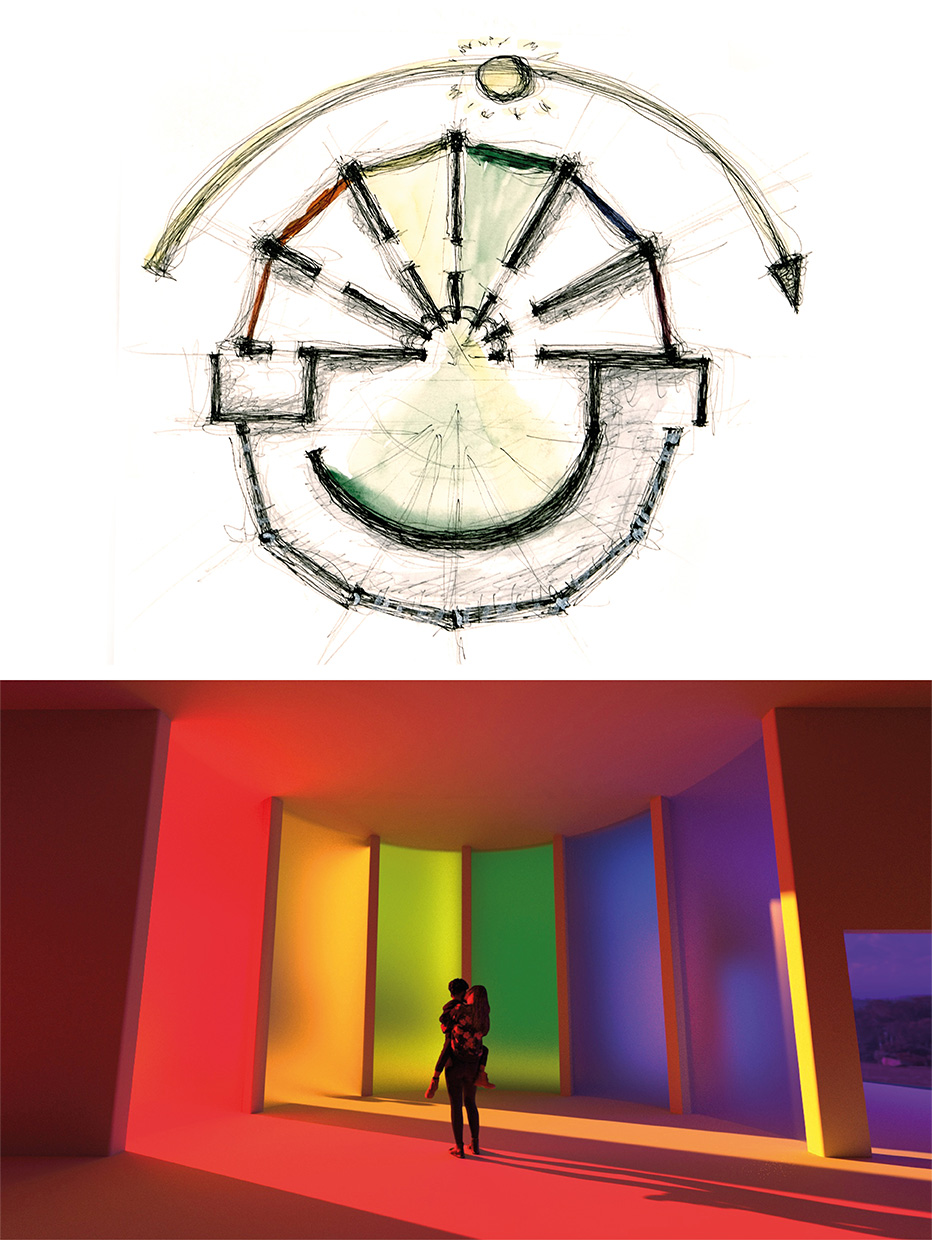Aevus

Category
Daylight investigations - Region 1: Western Europe.
Students
Paris Deuter
Leon Javier Krug
Peter Jüssen
School
Alanus University of Arts and Social Sciences
Country
Germany
Download
Download ↓
Our current method of perception and method of subdividing the day into 24 distinct pieces dates all the way back to the ancient Egyptians.
It is a great and easy mathematical way of subdividing the day into distinct sections, but at the same time can be considered an inhuman and mechanical way of partitioning the day.
Looking at the sun’s path, it is one smooth motion, time flows into each other, far removed from the mechanical ticking of our modern watches.
We envisioned a new way of reinterpreting time, not as a numeric subdivisional system, but rather as one based on feeling and mood, where time flows into each other and isn’t strictly divided, far more close to the sun’s natural modus operandi.
As the sun progresses throughout the day, the light temperature changes with it, alongside the colour of the light. We amplified that phenomenon to change “times” of day into “colours” of day.
The front facade features a set of 6 light-capturing tunnels, each with its own set of tinted windows, following the colours of the rainbow. Whilst at first this may seem like a new way of mathematical subdivision, the light flowing through the different channels mixes as it exits, thus creating a smooth gradient of colour. The channels are separated from the central projection area through a layer of diffusion, making the inward projected light softer and more filling.
Visitors entering the building start their journey by walking through each of the individual light channels, walking in an inwards twisting curve until they enter the central projection area.
As the sun progresses along its path throughout the day, the light being projected inwards changes in colour, thus subdividing the day into a new system of time. The building acts as one large colour-based sundial.
The central projection area features a large curved wall, that can be interactively used to experience this new method of timekeeping. It is open to draw and write upon with differently coloured pens, which leads to an interesting phenomenon. Depending on what colour the text is written on the wall, and what time colour of the day it is, the text written reveals or disappears. Text written in red for example will appear invisible for the first hours of the day, as the light projected inside is also red. This creates an ever-changing mood and set of knowledge and information. Again, instead of seeing writing as something permanent, it becomes something temporary, more akin to a memory than a piece of writing on a wall.
The path then continues around the back side of the projection wall, getting darker and more distant from the interplay of colours until it finally ends in the main exit of the clock, leading to a smooth transition from the intense interplay of colour and knowledge to the outside.

































